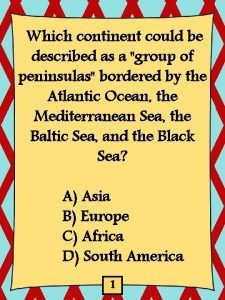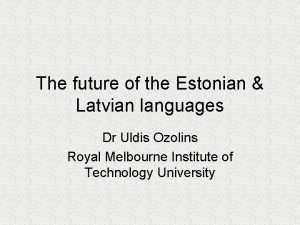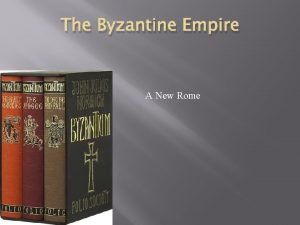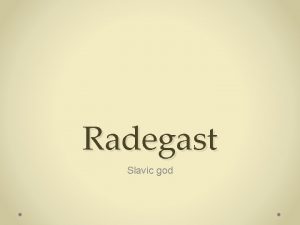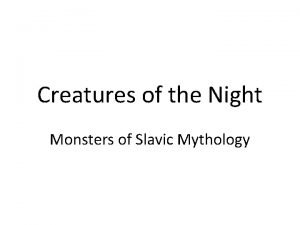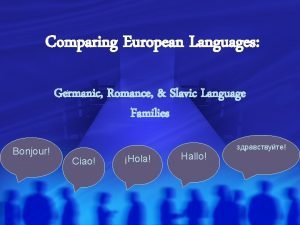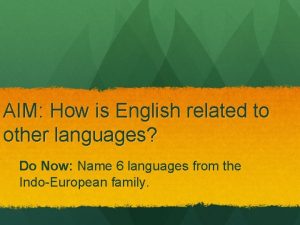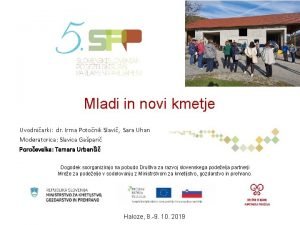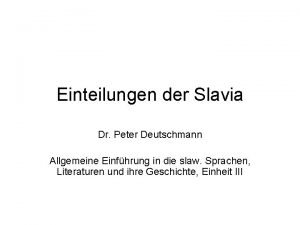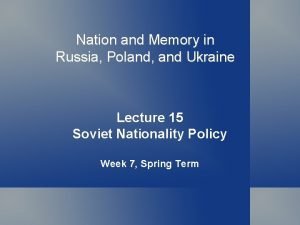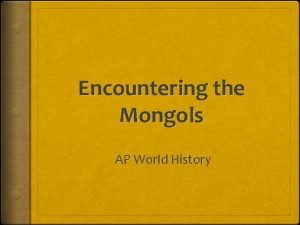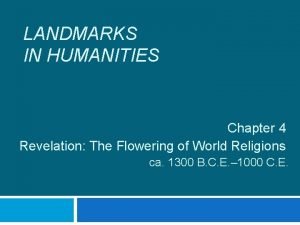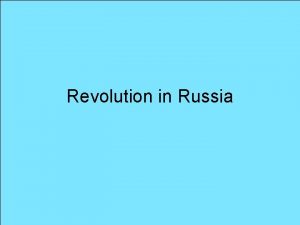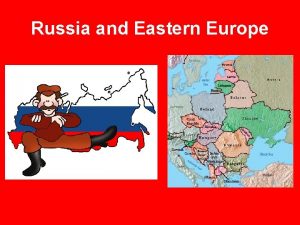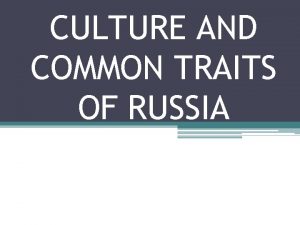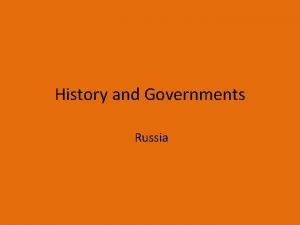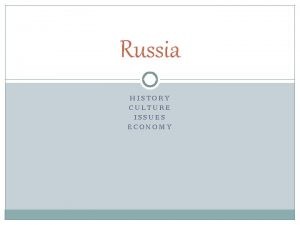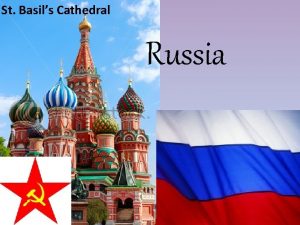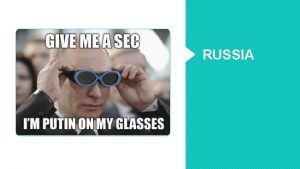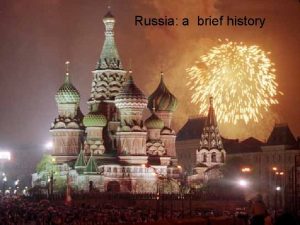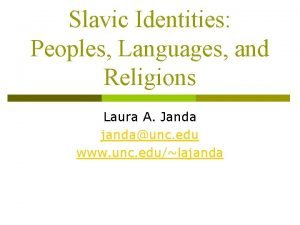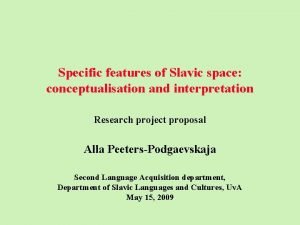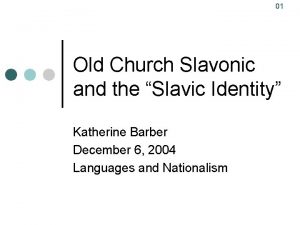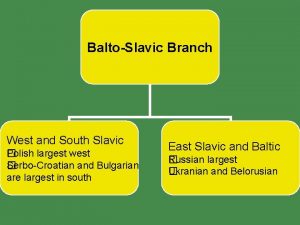History and Culture of Russia Early History Slavic


























- Slides: 26

History and Culture of Russia

Early History • Slavic peoples have lived in Russia for • • thousands of years. Vikings and missionaries influenced the development of Russia. In 1547, Ivan IV crowned himself czar.

Ivan IV l l l Known as “Ivan the terrible” Lost both parents and was treated cruelly. As czar he treated others with cruelty, included his oldest son, whom he killed with his bare hands. He set up a force of 6, 000 secret police to find and punish his “enemies. ”

Peter the Great l Czar who expanded and modernized Russia.

Peter the Great RHe was 6’ 8” tall and rumored to be strong enough to roll up a solid silver plate like a paper.

Peter the Great He became czar at 10 and ruled for 43 years. He traveled through Europe to learn about the new technology of the Industrial Revolution. He tried to westernize Russia.

Catherine the Great § German princess who married Peter’s weak, unpopular grandson. § With the help of palace guards, she overthrew and later poisoned him.

Catherine the Great l Proclaimed herself empress of Russia in 1762. l She tried to westernize Russia also.

Catherine the Great • Her greatest contribution to Russia was the conquest of new lands. • Her main goal was to gain warm-water ports for Russia

£Her coronation crown contained 5, 000 diamonds, 76 perfectly matched pearls, and a 400 carat crystal that had belonged to and emperor of China

Russian Revolution ü By the 1900, most Russians were poor farmers who were unhappy. ü Because trains were being used to carry soldiers during WWI, there were no trains to carry supplies. ü On February 25, 1917, women waiting for bread were told there would be no bread.

Russian Revolution • The women took to the icy streets, shouting, “We want bread!” • They stopped traffic, turned street cars over, and broke windows in shops and government buildings.

Russian Revolution l Within hours, the women were joined by thousands of factory workers. l Many held signs that declared: “Down with the czar!”

§ On March 15, 1917, Nicholas II, the czar of Russia, abdicated the throne.


• Later in 1917, the Bolshevik Party, led by Vladimir Lenin, overthrew the government. In March of 1918, Lenin signed a peace treaty with Germany so that the Soviet Union could withdraw from World War I.

l Lenin’s communist government took over all farmland major industries. l His slogan was “Peace! Land! Bread!” l In 1922, the Union of Soviet Socialists Republics (U. S. S. R. ), or Soviet Union, was created.


§ In 1924, Lenin died, and Joseph Stalin became the new ruler. § Stalin was one of history’s cruelest leaders. § Managers of factories and collective farms who failed to produce the expected amount were killed.

People were arrested for having friends in foreign countries, for practicing their religion, for simple remarks overheard by police informers. Even the director of the Moscow Zoo was arrested because his monkeys got a deadly disease.

World War II F Stalin signed a treaty of friendship with Hitler. F In return for half of Poland, Stalin agreed not to stop Hitler’s invasion. F In the summer of 1941, Hitler broke the friendship treaty and ordered a blitzkrieg against the Soviet Union.

R The Soviet Union defeated Germany in the Battle of Stalingrad. R Following the war, the Soviet Union and the Eastern bloc countries became rivals of the United States and the Western bloc countries.

This was called the Cold War.

• In 1985, Mikhail • Gorbachev became head of the Soviet Union. In 1989, the Solidarity labor union in Poland led Poland to throw off Communist rule.

§ In October 1990, East and West Germany became a democratic nation. § The Berlin Wall was taken down. Berlin Airlift

l l In 1991, the Soviet Union collapsed, but later that year, formed the Commonwealth of Independent States. The CIS provides a way for the former Soviet republics to address shared problems such as: foreign relations, defense, economics, law enforcement, immigration policies, and environmental issues.
 Which letter represents the pyrenees mountains on the map
Which letter represents the pyrenees mountains on the map Is latvia slavic
Is latvia slavic Byzantine definition
Byzantine definition Slavic
Slavic Slavonic language
Slavonic language Slavic mythology creatures
Slavic mythology creatures Language families
Language families Is slavic indo european
Is slavic indo european Balto slavic languages
Balto slavic languages Irma potočnik slavič
Irma potočnik slavič Slawische sprachen
Slawische sprachen Early cpr and early defibrillation can: *
Early cpr and early defibrillation can: * Non material culture
Non material culture Batch culture vs continuous culture
Batch culture vs continuous culture American culture vs indian culture
American culture vs indian culture Uses of selenite f broth
Uses of selenite f broth Folk culture and popular culture venn diagram
Folk culture and popular culture venn diagram Chapter 4 folk and popular culture
Chapter 4 folk and popular culture Tsi
Tsi Folk culture and popular culture venn diagram
Folk culture and popular culture venn diagram Stroke culture method
Stroke culture method Lawn culture
Lawn culture Surface culture deep culture and esol
Surface culture deep culture and esol Ukraine history with russia
Ukraine history with russia Mongols in russia ap world history
Mongols in russia ap world history What landmark legalized christianity
What landmark legalized christianity Sociologists define a symbol as
Sociologists define a symbol as
